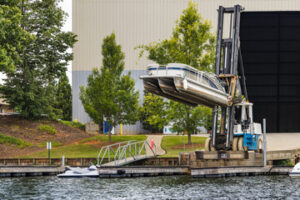Bathroom Remodeling Lexington KY can be a big investment. Get a preliminary estimate of value in just two minutes.
Labor costs can account for up to half the cost of a remodel. To reduce these costs, repurpose existing cabinets, refinish or resurface countertops and tile, and choose off-the-shelf fixtures.
Cosmetic changes typically don’t require a permit, but larger renovations might. Check with your local planning or building department before starting work.
A modern and stylish bathroom can elevate the overall aesthetic of a home. It can be a major selling point when it comes to sell, especially among young buyers who place great importance on style and design.
Aesthetics are also important to consider during the planning stage of a remodel. Choosing a color scheme and materials that complement each other will create a cohesive look and feel, and help the space to flow naturally. Additionally, using multiple textures can add visual interest and help to create a sense of depth in the space.
While many homeowners focus primarily on the aesthetics of their bathroom during renovation, it’s equally important to think about practicalities like storage and lighting. For example, a cluttered bathroom can make it hard to move around and find what you need. Adding extra storage can help reduce this problem by providing a place to store towels and other essentials. Similarly, installing adequate lighting is important to ensure that you can see when getting ready in the morning or at night.
Investing in quality lighting fixtures will help you avoid the common mistake of installing poor-quality lights that only provide a single light source throughout the room. Instead, try to install a variety of different lighting sources in your bathroom, such as ambient, task, and accent lighting, to create a more dynamic atmosphere.
Another way to improve the aesthetic of your bathroom is by replacing old and outdated flooring with new materials. While this may be a costly project, it will give your bathroom a brand-new look and increase its value. Changing the colors of your walls and ceiling is another cheap and easy way to refresh the aesthetic of your bathroom.
However, be careful not to go overboard with your remodeling plans and spend more money than you can afford. While a luxurious bathtub and a dazzling piece of tile might seem like tempting additions, they can end up costing you more in the long run as they are harder to maintain.
Bathrooms endure a lot of wear and tear: they have to be durable enough to handle big temperature changes, significant humidity swings, harsh chemicals, and daily use. If your bathroom doesn’t measure up to these standards, it might be time for a remodel.
During a remodel, homeowners often upgrade their home systems to enhance comfort and increase functionality. This can include ventilation upgrades, new heating systems like radiant floor heat, and tankless water heaters for continuous hot water.
The bathroom is also a prime place for smart improvements that make everyday tasks easier and more convenient. A smart toilet, for example, can detect when you’re approaching the bathroom and automatically flush itself for you. You can also add a smart showerhead that connects to your phone or tablet so you can customize the flow of your water.
If you’re installing a washer/dryer, make sure that the installation meets your building’s alteration agreement and that it can fit within your floorplan. If you’re not sure about this, ask a Sweeten contractor to check the existing floorplan and then make necessary adjustments. In one of our bathrooms, it took some serious Tetris skills on the part of our contractors to fit a pair of 24-inch stacking units.
Installing extra storage can free up space for other items and create a sleeker aesthetic. For example, you can install cabinets under the sink or on empty walls. You can even use your ceilings to install shelving or cabinets if the room isn’t tall enough for traditional solutions.
Another way to improve storage is by adding a linen closet or converting an existing closet into one. This can provide plenty of space to store towels, bathrobes, and other essentials while creating a seamless aesthetic.
Adding extra lighting is another simple way to brighten a bathroom while enhancing its functionality. Consider recessed fixtures, dimmers, and lighted vanity mirrors. These upgrades can help you take better care of yourself and set the mood when it’s time to get ready in the morning.
If your bathroom doesn’t currently meet accessibility requirements, you can incorporate many upgrades during a remodel to make it more comfortable and accessible. This can include adding grab bars, a higher toilet, and a walk-in tub. Incorporating universal design features now can save you money in the long run by preventing future renovations.
The bathroom is one of the most energy-consuming areas in a home. Upgrading to low-flow showerheads and faucets, LED lighting, and water-efficient toilets can save money and help reduce utility bills. Insulation is also key. Adding R-30 to R-60 insulation in the walls during your Greenwich bathroom remodeling can make the room much warmer in winter and cooler in summer. This can lead to significant savings on heating and cooling costs.
New light fixtures that use less electricity will also reduce your utility bill. Installing dimmable lights will allow you to adjust the brightness depending on how you use your bathroom, reducing lighting usage.
Adding storage space is another simple way to increase functionality without dramatically altering the layout of your bathroom. A well-organized cabinet with plenty of room for towels and other supplies can free up floor space and eliminate the cluttered appearance that often results from limited storage options.
Cluttered floors are not only unsightly, they can also create safety hazards by hiding things underfoot that could trip people up. By removing clutter through bathroom remodels and designing more functional storage solutions, you can create a safer space for everyone in the family.
If your bathroom has old, worn out plumbing lines and cabling, replacing them during a remodel can improve energy efficiency. An expert contractor will ensure there are no leaks, fill any holes, and replace any undersized framing to prevent heat loss. They can also add insulation and install ductwork to further boost energy efficiency.
Ventilation is critical for a healthy bathroom and for energy efficiency, as it helps reduce humidity levels and moisture buildup. Investing in a new ventilation system during your bathroom remodeling will help cut down on mold, mildew, and other health problems as well as limit energy consumption to regulate the temperature and humidity.
Incorporating sustainable materials and eco-friendly features into your bathroom remodel can have an additional benefit, increasing the resale value of your home. With increasing concerns about global climate change and dwindling natural resources, environmentally conscious buyers are likely to appreciate the green elements in your home.
Adding new bathroom fixtures and appliances typically increases the value of your home. This is especially true for high-end items like a custom tub or a beautiful new vanity. But even a mid-range remodel can generate a high return on investment (ROI) when materials are carefully chosen. A good rule of thumb is to think like a potential homebuyer. Choose durable materials that are easy to maintain and can stand the test of time.
A bathroom remodel requires a significant amount of labor, and the cost of remodeling depends on the complexity of the project. Simple changes can be inexpensive but might require a rerouting of plumbing lines, electrical wiring or drywall repairs. More extensive remodeling projects could involve changing the layout of the room, dropping walls and rewiring or stripping down to the studs and subfloor. This type of transformation usually requires professional design services and construction services from licensed contractors.
The average cost of a bathroom remodel also varies depending on where you live, as prices for materials and labor can vary widely from one region to another. It’s important to work with a trusted and experienced contractor to minimize the risk of unexpected costs during the project.
It’s a good idea to set aside 5-10% of your total remodel cost for contingencies, such as hidden water damage behind the walls or a need to change the material selection due to an unavailability issue. Change orders can add a significant amount of money to your overall bill and might delay the completion date.
Unless your bathroom is extremely outdated, it may be possible to save money by simply replacing old pipes with modern PEX ones instead of doing a full remodel. Older homes often have corroded copper plumbing and this is an easy upgrade that can help attract buyers at selling time.
In addition to the monetary ROI, homeowners who remodel their bathrooms can reap other benefits that go beyond dollar figures and calculations. For example, a joy score, which measures how satisfied homeowners are with their renovation procedures, can be as much of an indicator of value as a cost-benefit analysis.





